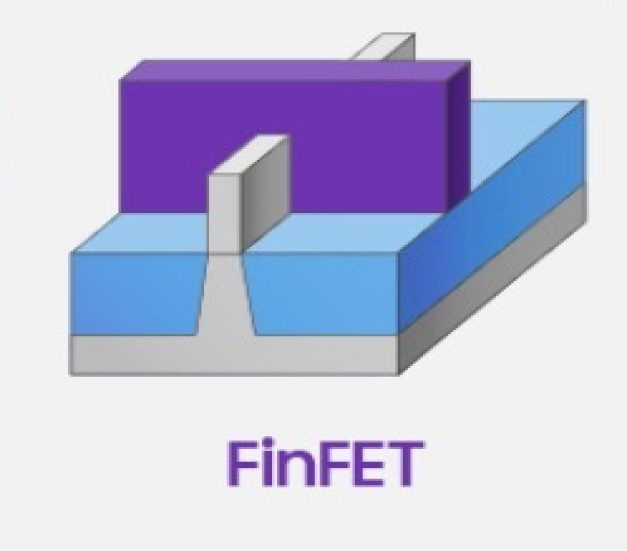How to Learn VLSI from Scratch
By - Abhiyantha Oct 10, 2023 5 Minutes
Are you fascinated by the world of Very Large Scale Integration (VLSI) design but don't know where to begin? Learning VLSI design from scratch may seem like a daunting task, but with the right approach, it can be an exciting and rewarding journey. Whether you're a student looking to kickstart your career or a tech enthusiast exploring a new field, here are the essential steps to learn VLSI design from scratch.
1. Understand the Basics of Electronics
Before diving into VLSI design, it's crucial to have a solid understanding of electronics fundamentals. Familiarize yourself with concepts like voltage, current, resistors, capacitors, transistors, and logic gates. You can find numerous online resources, textbooks, and introductory courses to help you grasp these essentials.
2. Learn Digital Logic Design
Digital logic design serves as the foundation of VLSI design. Start by studying Boolean algebra, logic gates, truth tables, and logic minimization techniques. Understanding how digital circuits operate is vital, as VLSI design primarily involves creating complex digital systems.
3. Explore Integrated Circuits (ICs)
Get acquainted with integrated circuits (ICs) and their classifications. Learn about the different types of ICs, such as digital, analog, and mixed-signal ICs. This knowledge will provide context for VLSI design and help you recognize the specific role of VLSI in the semiconductor industry.
4. Master Hardware Description Languages (HDL)
Hardware Description Languages like Verilog and VHDL are essential tools in VLSI design. These languages allow you to describe the behavior and structure of digital circuits. Invest time in mastering one of these languages, as they are used extensively in the industry.
5. Study VLSI Design Principles
Begin your journey into VLSI-specific topics by studying principles like ASIC (Application-Specific Integrated Circuit) and FPGA (Field-Programmable Gate Array) design. Understand the key differences between these approaches and their respective applications.
6. Explore Semiconductor Fabrication
Learn about the semiconductor manufacturing process, including photolithography, etching, doping, and packaging. Understanding how semiconductor devices are manufactured will provide valuable insights into VLSI design constraints and possibilities.
7. Learn from Top VLSI Training Institute
Consider enrolling in specialized VLSI training programs. One exceptional option is Abhiyantha, offering hands-on experience, expert guidance, industry-relevant skills and 100% placement assistance to kickstart your VLSI dream job with the Career Builder Program from the world's first Cadence Certified Training Partner.
8. Work on Practical Projects
The best way to solidify your VLSI design skills is through hands-on experience. Consider working on personal projects or contributing to open-source hardware projects. Building actual circuits and designing digital systems will enhance your proficiency.
9. Stay Updated with Industry Trends
VLSI design is ever-evolving. Keep up with industry trends, technologies, and methodologies by following news, attending conferences, and joining VLSI forums. Stay informed to enhance your career prospects.
10. Pursue Advance Certification Programs
If you're serious about a career in VLSI design, consider pursuing advance certification programs in the field. Abhiyantha's Advance Certification Program offers in-depth knowledge, hands-on experience, and 100% placement assistance. This program equips you with the skills and expertise needed to excel in the dynamic VLSI sector.
As you embark on your VLSI learning journey, keep an eye out for opportunities to take your skills to the next level. Kickstart your VLSI dream job with the Career Builder Program from the world's first Cadence Certified Training Partner. Learning VLSI design from scratch is a rewarding endeavour that opens doors to a world of innovation and technology. By following these steps and staying committed to your learning journey, you can become proficient in VLSI design and contribute to the ever-evolving semiconductor industry.
Remember that patience, practice, and continuous learning are key to mastering VLSI design. Embrace the challenges, seek guidance when needed, and enjoy the journey of becoming a VLSI design enthusiast or professional.
Share This Blogs
Featured Blogs

Top 10+ Most Asked VLSI Interview Questions with Answers by Industry Expert

The Ultimate Guide to Finding the Best VLSI Course in Bangalore
A Comprehensive Guide to Securing Your Dream Job in the Semiconductor Industry

Advancements in Semiconductor Manufacturing: Pioneering the Future of Electronics

Embracing the Future: Advanced Node Technologies in VLSI Design

From Classrooms to Cleanrooms: Academia's Role in Shaping India’s Semiconductor Industry

The Evolution of Integrated Circuits: A Journey of Innovation

Will AI disrupt EDA? Let’s examine the future of semiconductor design with AI.

Breaking Boundaries with Chiplets: The Future of Advanced Packaging.

Understanding FinFET Technology: A Comprehensive Overview.

Moore’s Law vs. More than Moore: What’s Next for Semiconductor Scaling?

Common Challenges in Designing Low-Power VLSI Circuits
